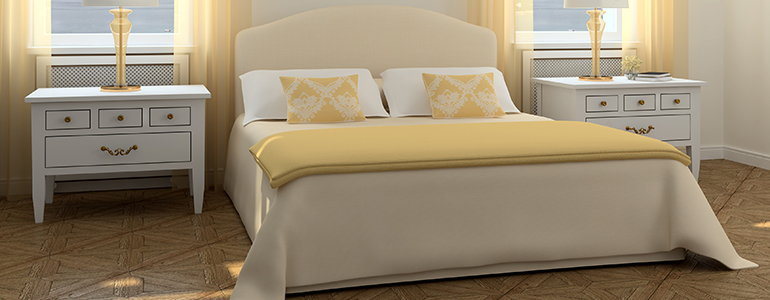Resting Easy

What You Should Know About Mattress Flammability Testing
10 October 2017
Mattress manufacturers and companies selling new mattresses in the U.S. are responsible for ensuring the products meet federal flammability regulations under 16 CFR 1632 & 1633. To comply with these standards, mattress must have a 100% pass rate on initial prototypes. Regular audits of product batches, called confirmation burns, can ensure mattresses continue to meet the standards, helping to avoid costly recalls and damage to your brand's reputation. There are several key areas to be considered under regulations, including open flame testing, fire retardants and surface materials.
Open Flame Testing
The regulations for mattress flammability require that a mattress releases only a limited amount of heat during the initial phase of a fire. This allows the user more time to escape, ultimately reducing injury. To test against this, an open flame test exposes three prototype mattresses to a flame for 50 seconds on the side of the mattress and 70 second on top. All three samples must pass the test. For confirmation burns, only one sample must pass.
Fire Retardants
The most combustible part of the mattress is the interior core. To reduce the risk of a fire, manufacturers must apply fire-retardant chemicals to the core; however, this raises concerns about exposure to harsh chemicals. To address this, Part 1633 requires that a fabric or fiber barrier surround the interior core of the mattress to lower exposure to the flame-retardant chemicals.
Surface Materials
16 CFR 1632 evaluates the capability of a surface material to withstand a smoldering cigarette's ability to burn through the surface of the mattress to the more combustible sections below. The same testing also evaluates mattress pads and toppers. Under this part of the regulation, two surfaces must be tested to demonstrate compliance. However, mattress pads and toppers must have six surfaces tested. A surface is defined as the intended sleeping surface for the end user. So, mattresses that can be flipped have two surfaces that require testing, versus a mattress with a pillow-top or layered foam that only have one surface.
Manufacturers and sellers may risk damaging their brand by bringing a product to market that does not meet industry or quality standards. Such risks include recalls, fines and reputational damage, among others. Testing mattress for flammability is just one step to take to safeguard against such risks.
Brian Kneibel has spent more than 6 years at Intertek where he has been involved in multiple aspects of standards development across the furnishings industry, authoring various articles and technical papers focused on the testing and certification of furniture. Brian is currently involved with the Standards Development Committee of the Business and Institutional Furniture Manufacturer's Association (BIFMA), Sleep Products Safety Council (SPSC) for the mattress and bedding industry, and recently joined the Solutions Partner Board for American Home Furnishings Alliance (AHFA), where he will play an active role in identifying issues and developing solutions in efforts to further advance the furniture industry within the global marketplace.
Tags: 2017 | Brian Kneibel | Furniture | Product Design | Quality and Performance | Safety & PPE

Brian Kneibel,
General Manager, Furnishings


